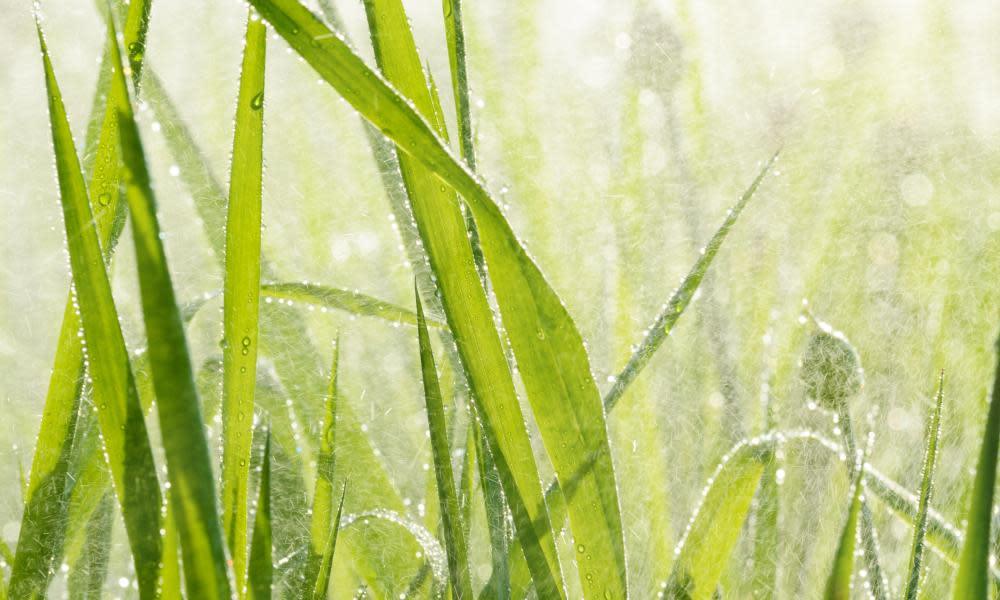Lawns and USA politics: it’s a turf war

Sitting on a soft, green carpet of lawn in the summer, it’s hard to picture a less politically contentious image. But in today’s tumultuous world of increasingly tribal sentiment, even grass is a highly charged symbol about which we are asked to pick a side.
When I first read that in the United States lawns were a partisan issue, I thought it must be a joke. So I decided to test it, by cutting and pasting a common media claim – that lawns are the most widely grown and irrigated crop in America – into my Twitter feed.
Within minutes I started to receive passionate replies in very colourful language from accounts with bios describing themselves as “defenders of America” and “true patriots” who fervently believed that a stat about lawns was an attempt to undermine their country and way of life. Many pointed out that “my type” wouldn’t be happy until I turned all cities into never-ending concrete. One exclaimed that in Los Angeles, liberal homeowners replacing lawns with native planting and rocks “made it look like a desert”, seemingly unaware that LA is, in fact, in a desert.
This level of enthusiasm was met by an equal measure of tweets claiming that lawns were part of a larger conspiracy to transfer suburban wealth to multinational corporations and were “an insatiable sponge for poisons”. Lawns, apparently, are a symbol of ecological destruction, outdated conservative values and even white supremacy.
In both cases I was either someone attempting to steal a sacred symbol of the American dream, or a naive fool unaware of the vast reach of capitalist greed. Just as I was feeling relieved that this aspect of the culture war seemed to be a quirk of the other side of the Atlantic, colleagues pointed me to articles in the British press echoing these sentiments. Oh dear.

In contrast to many press claims, lawns are not the most widely grown crop in the US. They cover between 30-40m square acres, which is less than half the acreage dedicated to corn, according to Columbia University. However, that is still a vast area, roughly comparable to some estimates of the land area dedicated to wheat in the US in recent times. Grass is a hungry crop, too, using 10 times the amount of pesticides and fertilisers an acre than farmed crops, and consuming 30-60% of urban water – most of which is wasted due to poor timing.
But here’s the thing: while attempting to recreate the rolling green hills of Surrey may require a huge level of input in Arizona or southern California, it doesn’t in Surrey. In milder, wetter climates, as found in Washington State, Oregon or large swathes of the UK, lawns may not require any input at all. Grasses are some of the most resilient plants on the planet and will easily recover even if dried to the point of turning brown. In many cases an intensive input is only needed to maintain a totally flawless finish, so often it’s the waste that’s the problem, not the lawn itself.
Could it be possible that there isn’t a neat one-size-fits-all solution to gardening that requires one to pick, then angrily defend, a political side? Like all creative fields, gardening is made better by a diversity of opinions, tailored to fit local climate and culture. It benefits from breaking free of these overly simplistic divides, as does (in my opinion) society in general.
Follow James on Twitter @Botanygeek


